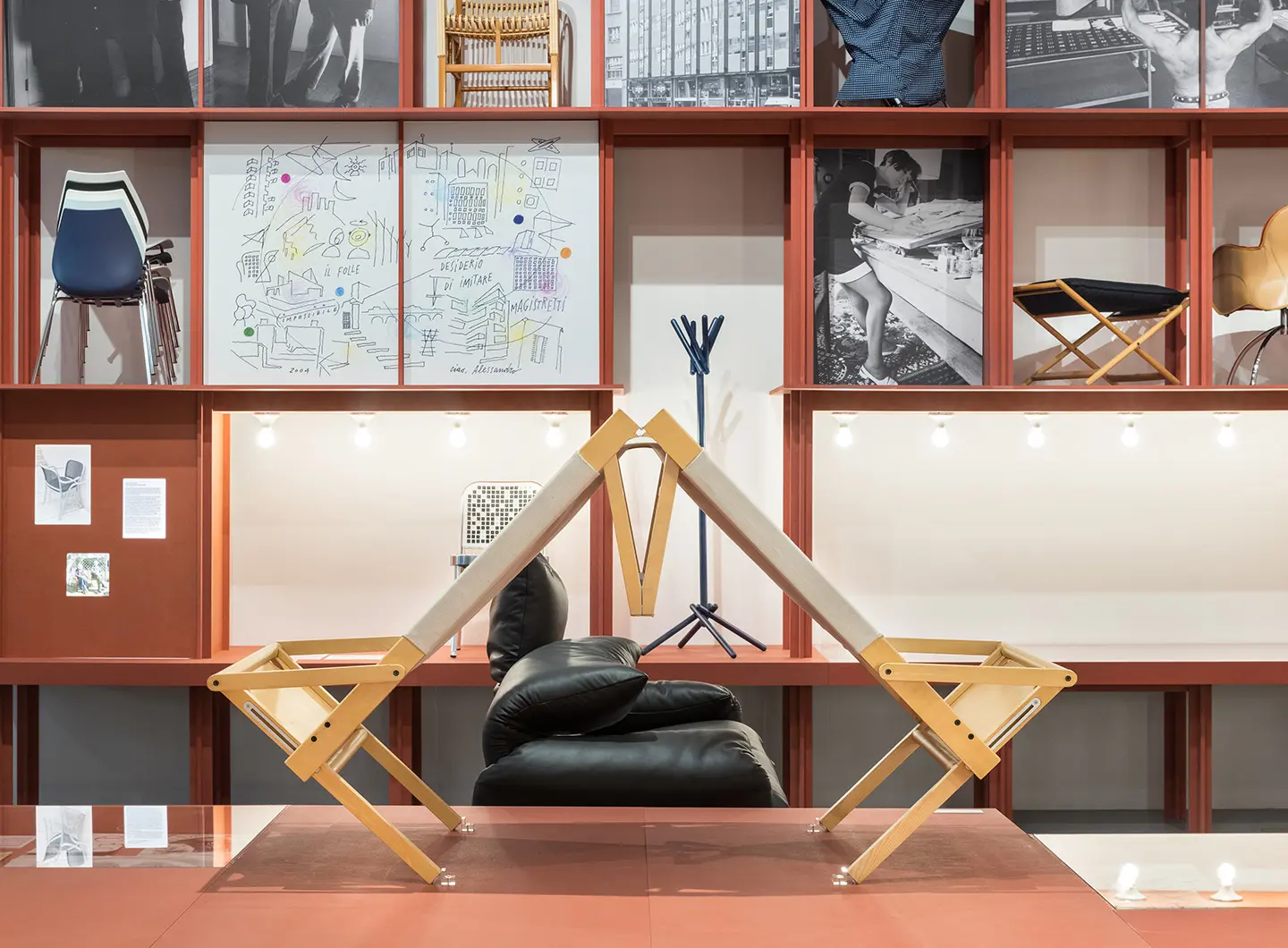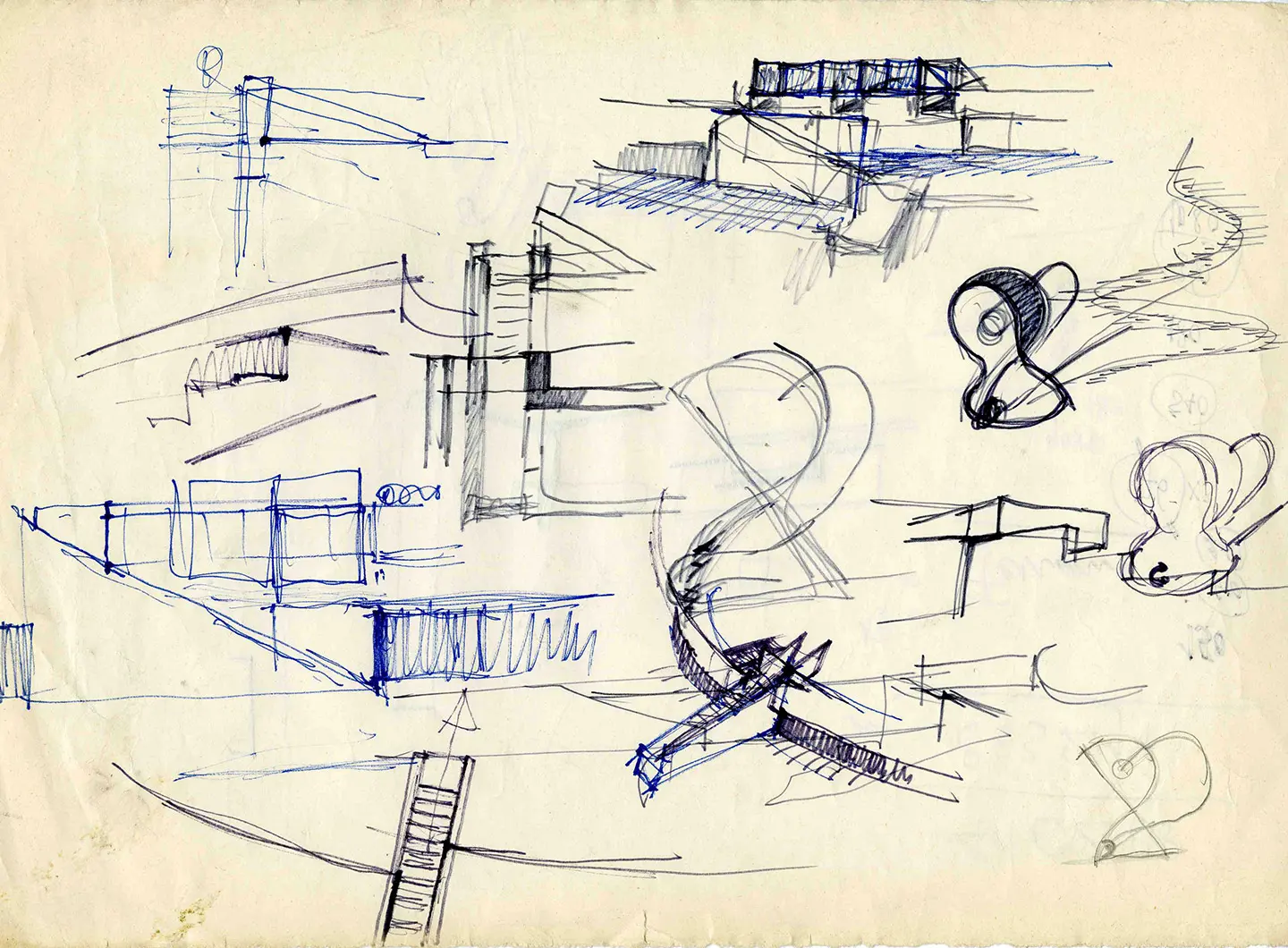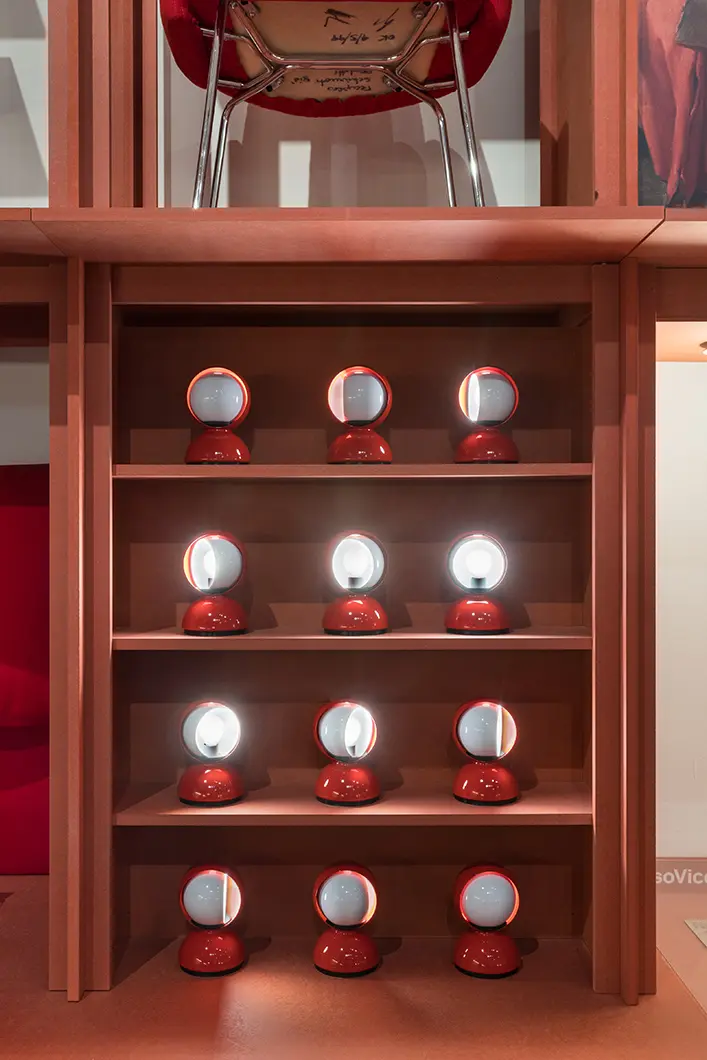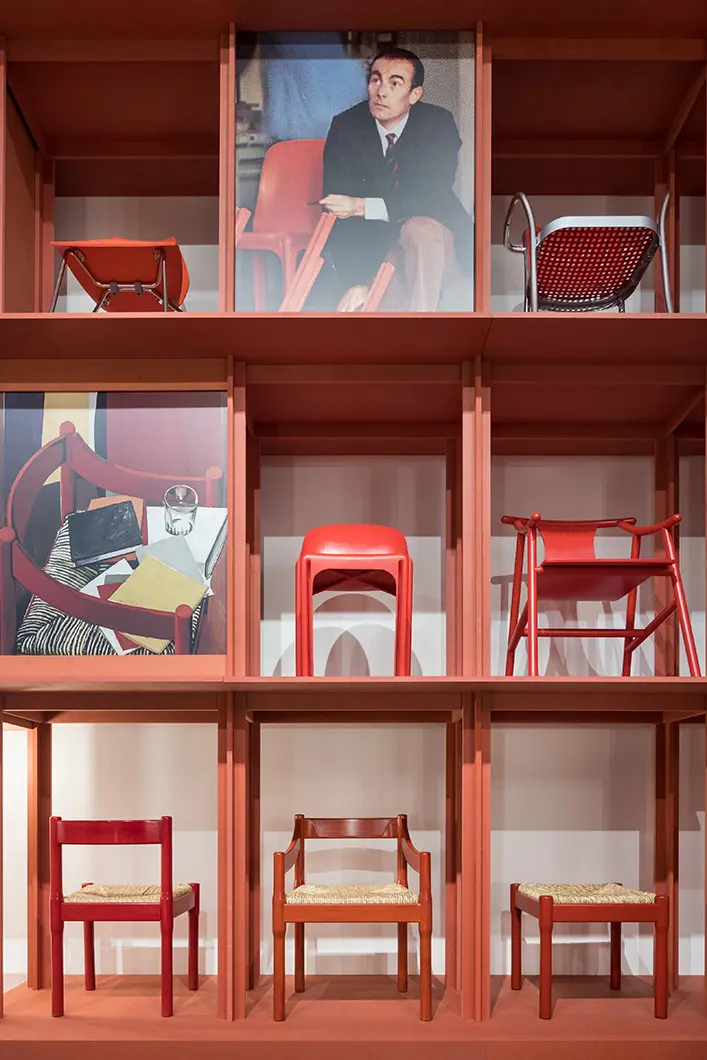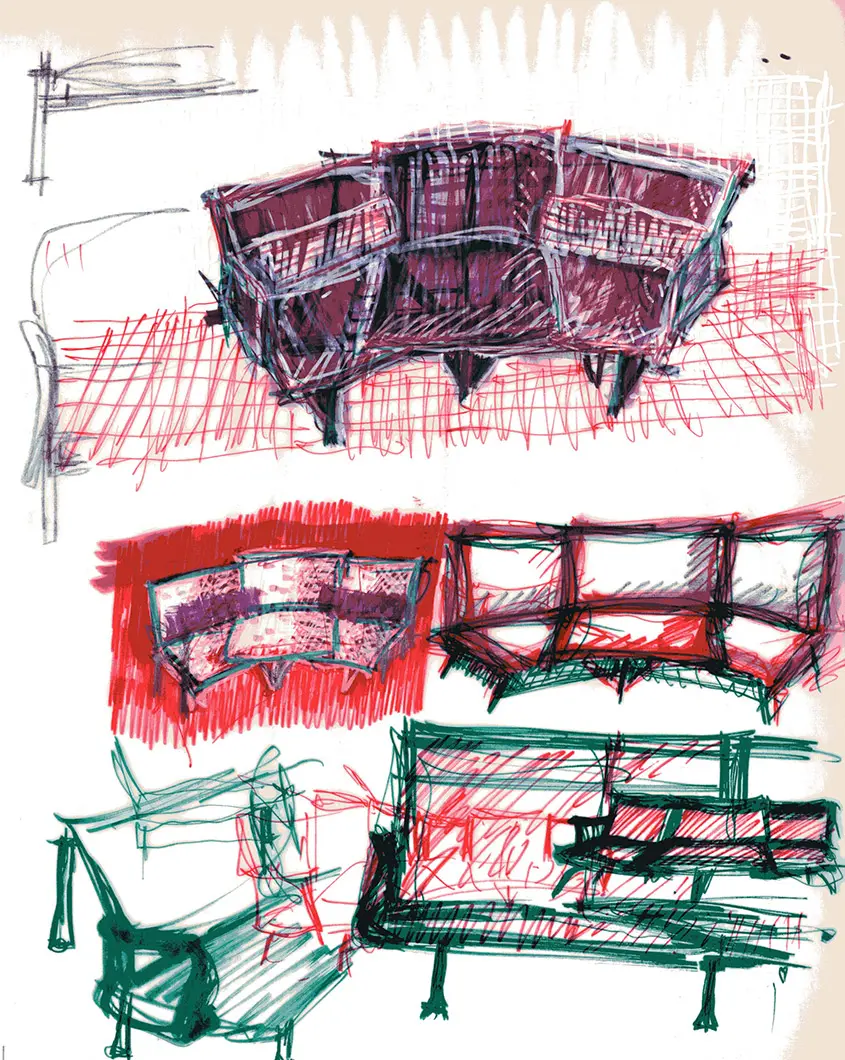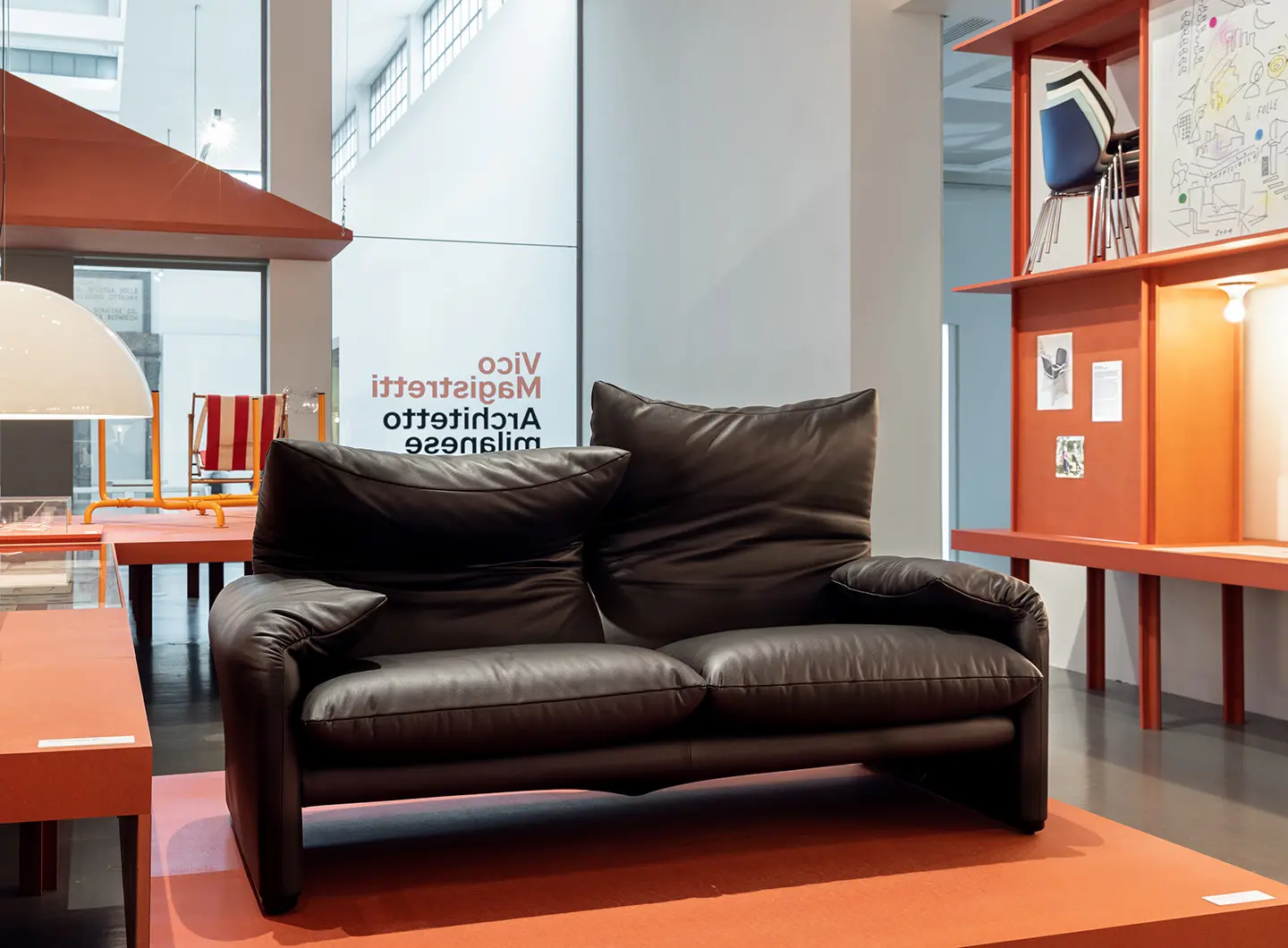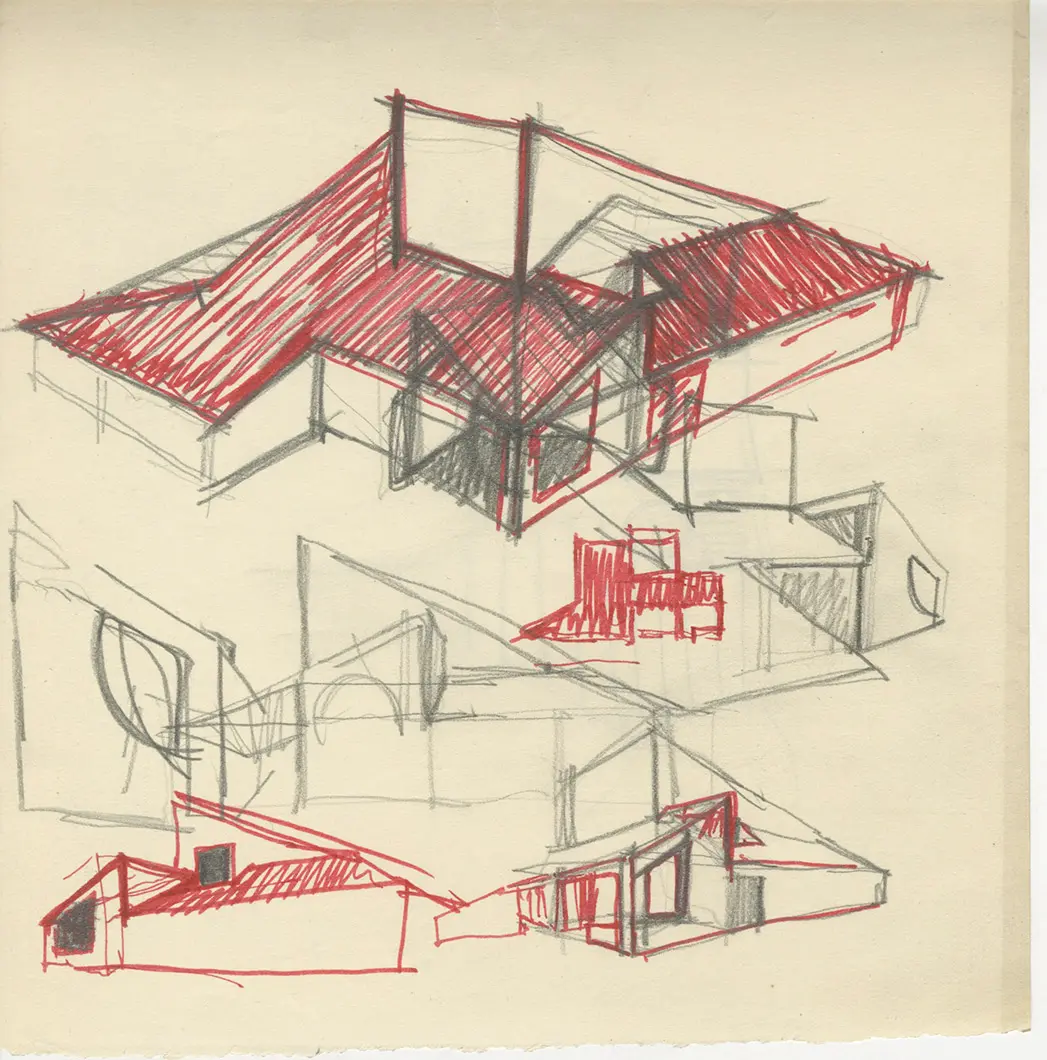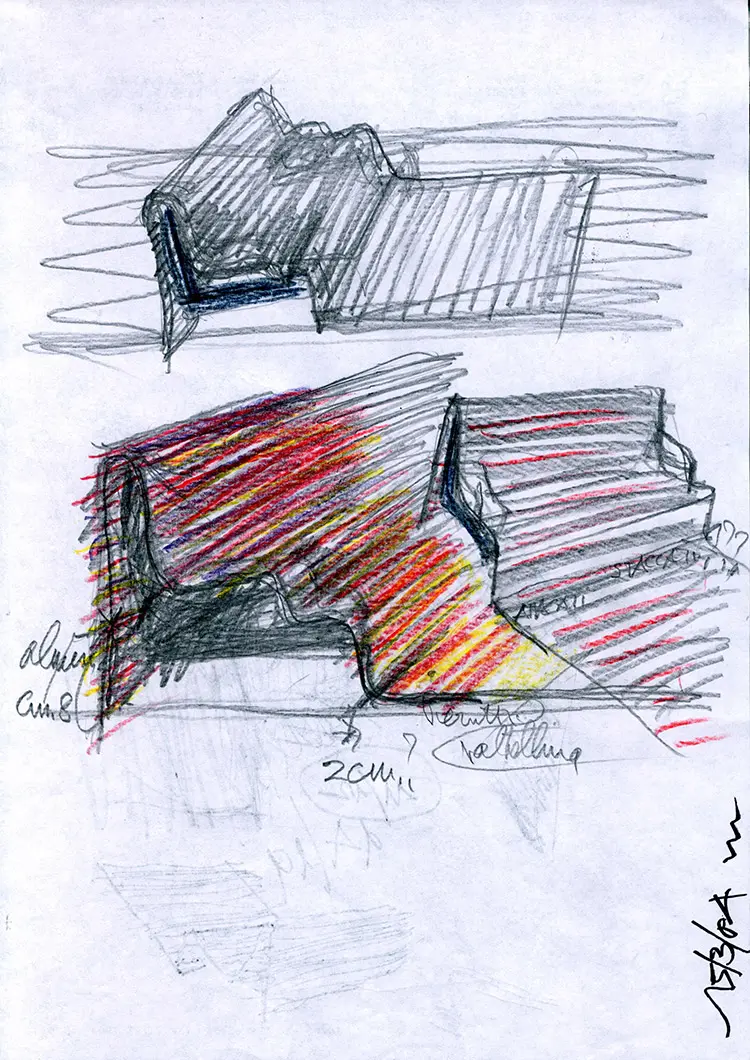From BIG to David Chipperfield, Frank Gehry to Snøhetta: a world tour of the best buildings set to open in 2026
Vico Magistretti, the Milanese architect who straddled modernity and tradition
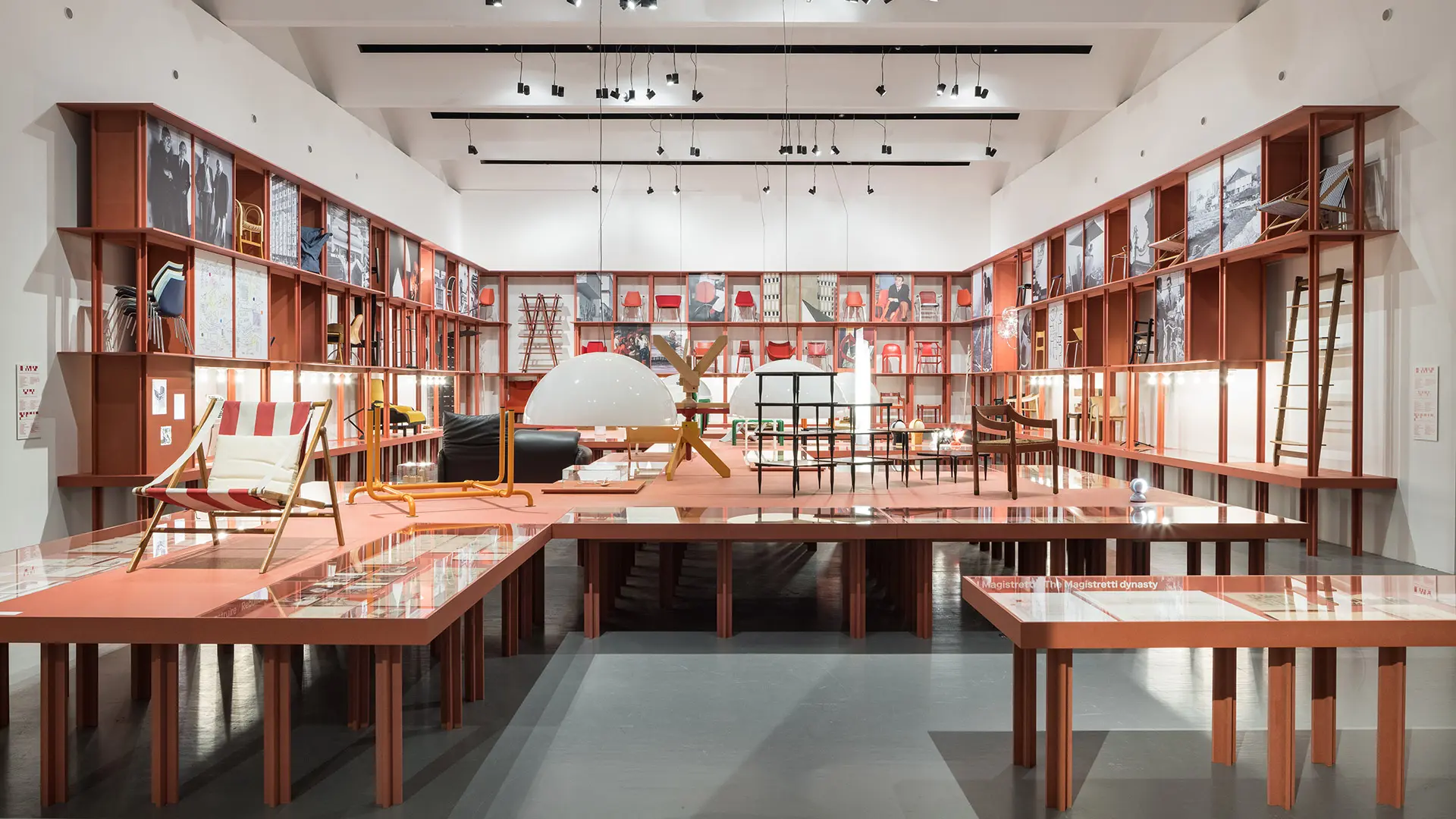
Exhibition view
© Triennale Milano - Photo by Gianluca Di Ioia
Two exhibitions are being held in Milan celebrating the centenary of one of the undisputed Masters of Italian Design. Method and simplicity were his creative hallmarks. Charisma and irony his personal ones.
“I must have made around fifty chairs, of which perhaps ten are left, but if I hadn’t made all fifty, I wouldn’t even have made those ten. What counts in the end is effort, work, care and never being satisfied.” That sums him up neatly – a great maker passionate about his subject, rigorous, demanding and determined, as well as curious and innovative. An architect, a designer and, above all, a man, deeply charismatic, sensitive and ironic. With his own particular predilections, such as red socks and jumpers.
Two exhibitions, which were in the pipeline for last year to mark the centenary of his birth but postponed because of the pandemic, pay him due homage, reconstructing his intense sixty-year career, rewarded with the Golden Compass Lifetime Award in 1994.
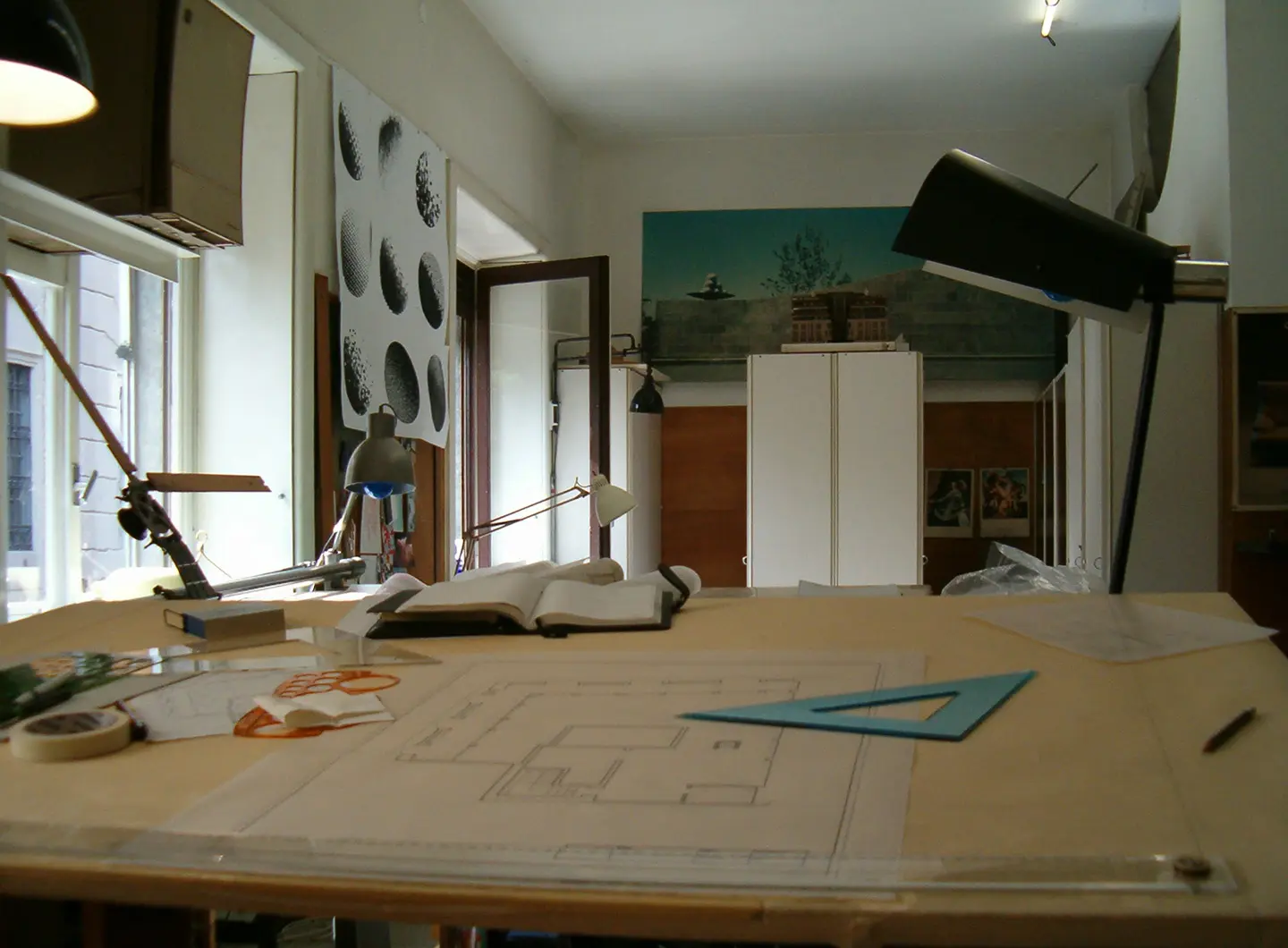
Studio Magistretti in the 90s
© Archivio Studio Magistretti - Fondazione Vico Magistretti
Vico Magistretti – his real name was Ludovico – was born into a middle-class family, several generations of which had been involved in architecture, in Milan in 1920. He enrolled in Architecture at the Polytech University of Milan, pursuing his studies in Lausanne, where he was a refugee during the war, before returning to his home city and graduating in 1945. He immediately embarked on his professional career, along with Paolo Chessa, at the practice of his father, Pier Giulio, who died that same year. The studio in Via Conservatorio remained his place of contemplation and the custodian of his memories for the rest of his life, until his death in 2006. It then became the headquarters of the Foundation that bears his name, a very real museum devoted to furthering the knowledge of his work. It is here that the exhibition “Magistretti Revisited”, inspired by the game of Chinese boxes and curated by Rosanna Pavoni with Margherita Pellino, is being held. Milan is the first box, loved, criticised and admired from the windows of his studio – the second box – so small that the rigour of his work method can be immediately discerned. The final box, the copious archive, is freely available at the portal archivio.vicomagistretti.it. Milan/studio/archive are documented by drawings and objects by the Master in a display that is a mix of philological reconstruction and recreation of the original atmosphere.
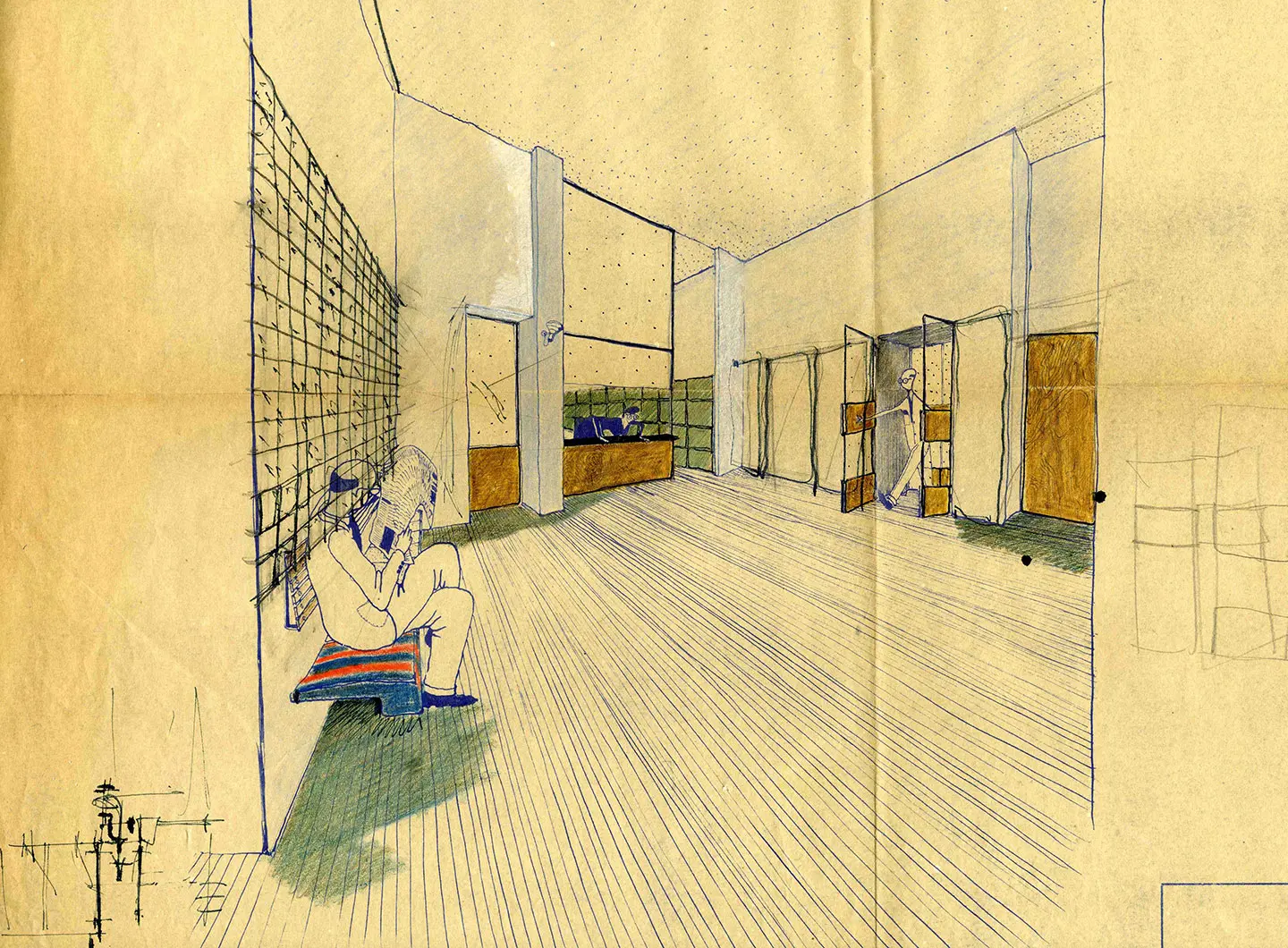
Studio of the notary Guasti in piazza Ferrari, Milan 1947 (with P. Chessa)
© Archivio Studio Magistretti - Fondazione Vico Magistretti
The one-man show “Vico Magistretti. Milanese Architect” is on at the Triennale di Milano until 12th September, with the collaboration of the Vico Magistretti Foundation, curation by Gabriele Neri and exhibition design by Lorenzo Bini/BINOCLE. It aims to pay homage to the creative genius, to his beginnings in these very spaces, where he obtained his first recognitions: he took part in the R.I.M.A. exhibition (Riunione Italiana per le Mostre di Arredamento/Italian Assembly of Furnishing Exhibitions) in 1946 and subsequently took part in several editions of the Triennale di Milano, including the 8th, the 9th (Gold Medal) and the 10th (Grand Prix).
The retrospective brings together drawings, sketches, models, photographs, prototypes and original pieces not just from the Magistretti archive, but also from companies, institutions and private people. It provides a full immersion in the world of one of the fathers of Italian design which, for the first time, encompasses his opera omnia, from his design pieces for the leading Made in Italy companies – Artemide, Campeggi, De Padova, Flou, Kartell, Oluce and Cassina (main sponsor) to his architectural projects.
Stefano Boeri, President of the Triennale Milano, had this to say: “Simplicity, elegance and genius are the three great components of Vico Magistretti’s design DNA, some of the main drivers of that extraordinary story which, thanks to the fertile dialogue between designers and illuminated entrepreneurs, propelled Italian design from Milan to the entire world from the second post-war period onwards.”
His hallmark was simple design, understood not as a lack of decoration but as “superimposed decoration.” “The reason I can tell you about it by telephone is that they are concepts. Simple, powerful and clear.” His language is clear and intuitive, which has ensured that his innumerable pieces have become evergreens, co-participants in the modernisation of home living design.

Entrance to the exhibition
© Triennale Milano - Photo by Gianluca Di Ioia
While his objects are known the world over – from the Atollo and Eclisse lamps to the Maralonga and Raffles sofas, the Demetrio and Vidun tables, the Selene and Maui tables, the Nathalie and Tadao beds to the Nuvola Rossa bookcase – his architectural projects are undoubtedly less well-known but no less important for that. His many post-war reconstruction projects in Milan include a number for INA-Casa, and he was involved in the joint project for the QT8 (Quartiere Triennale Ottava) neighbourhood with Mario Tedeschi, with whom he also designed the Church of Santa Maria Nascente in the same complex (1947-55). These were followed by the Torre al Parco tower block in Via Revere (1953-56, with Franco Longoni), the office block in Corso Europa (1955-57), the tower blocks in Piazzale Aquileia (1961-64), the mixed-use housing, office and retail building in Piazza San Marco (1966-1973), of which he said: “another building I like, but lots of people loathe, is the one in Piazza San Marco … that huge one,” and the Milano San Felice district, with Luigi Caccia Dominioni (1967-75). He also designed buildings for middle-class leisure, from the Golf Club in Carimate (1958-61) to the Arosio house in Arenzano (1956-59) and the Bassetti house in Azzate (1959-62). He was also involved with public projects: the Town Hall in Cusano Milanino (1966-69), the Faculty of Biology at the University of Milan (1978-81), the MM Famagosta depot in Milan, (1989-2000) and the Tanimoto house in Tokyo (1985-86).
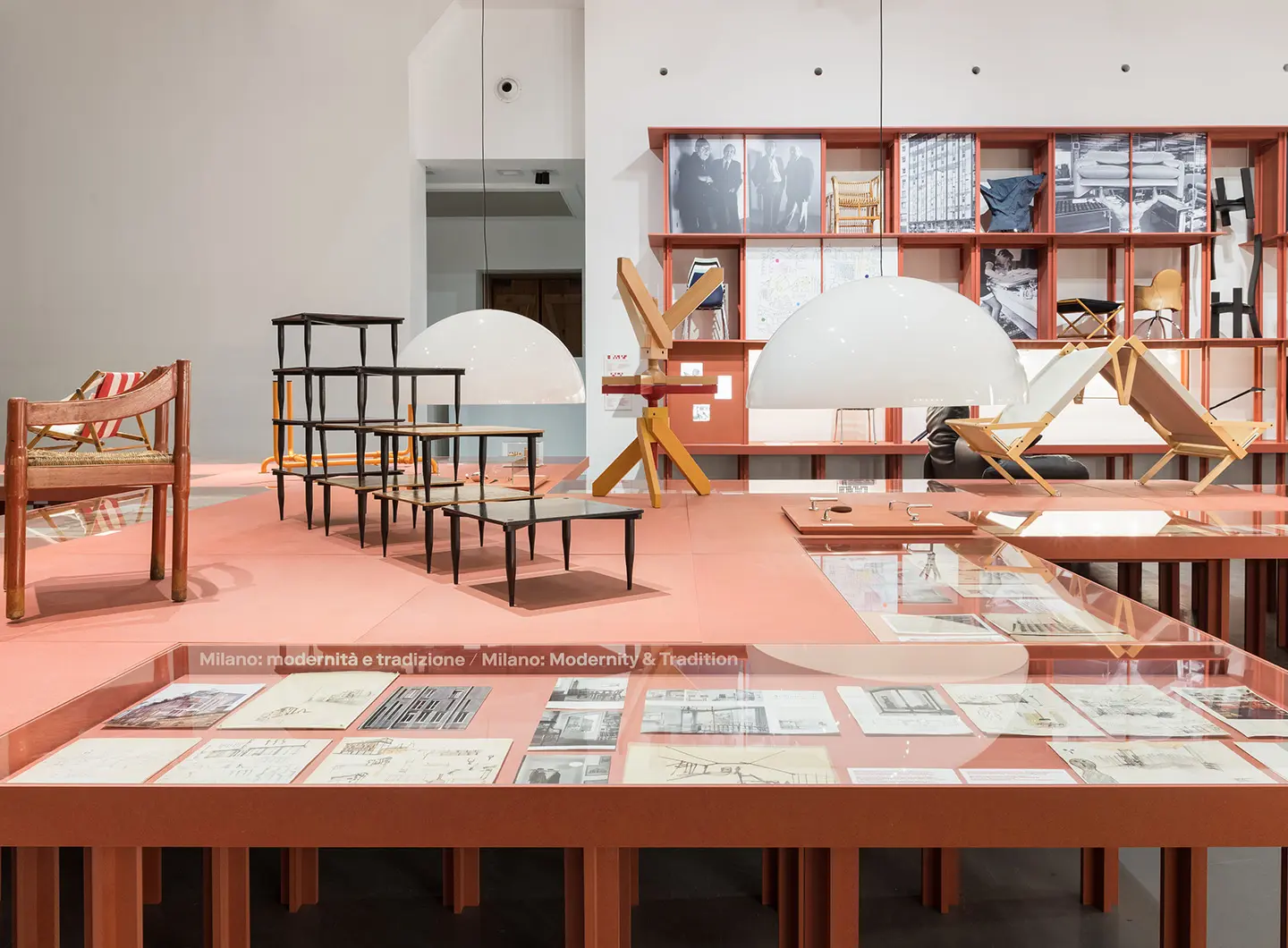
Exhibition view
© Triennale Milano - Photo by Gianluca Di Ioia
Magistretti was extremely well-connected, one of the most representative figures of the mid-20th century design culture, open and in touch with the international scene. He was a Visiting Professor at the Royal College of Art in London in the late Seventies – his students included Konstantin Grcic and Jasper Morrison, whose special work Homage to Vico features in the exhibition – becoming an Honorary Member in 1983; and he received the 1986 Gold Medal from the SIAD (Society of Industrial Artists and Designers), a London-based international organisation.
The solo show is rounded off by Gabriele Neri’s catalogue, with graphic design by the Norm studio, published by Electa. It provides further theoretical information, extensive illustrations, institutional texts and testimonies from scholars, designers, friends and pupils of Magistretti. Available in Italian and in English.
Magistretti Revisited
Vico Magistretti Foundation
18th May 2021 – 24th February 2022
Booking essential - www.vicomagistretti.it
Vico Magistretti. Milanese Architect
Triennale di Milano
11th May – 12th September 2021
www.triennale.org


 Stories
Stories
